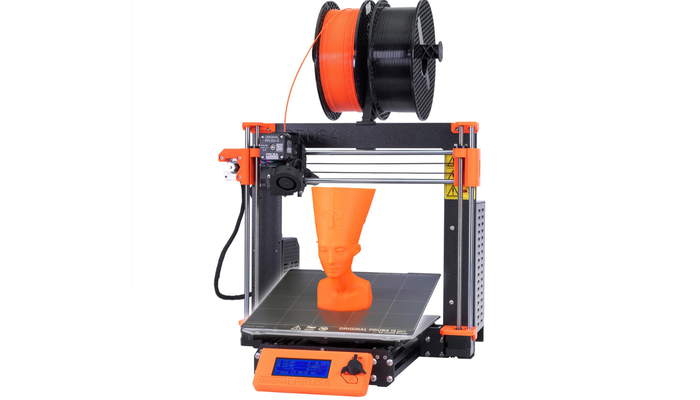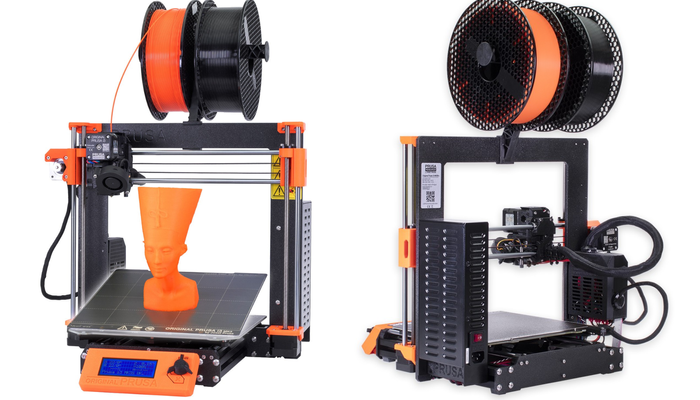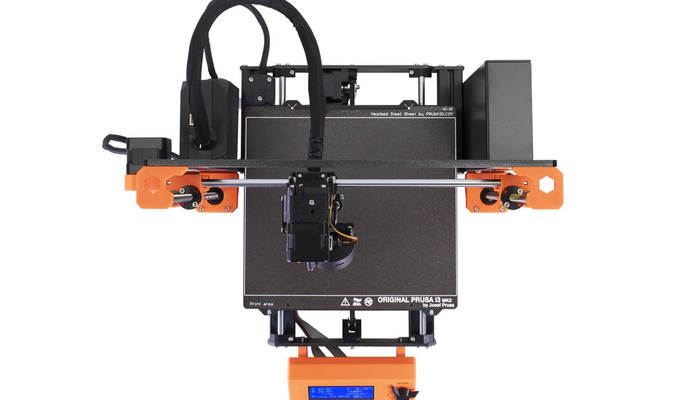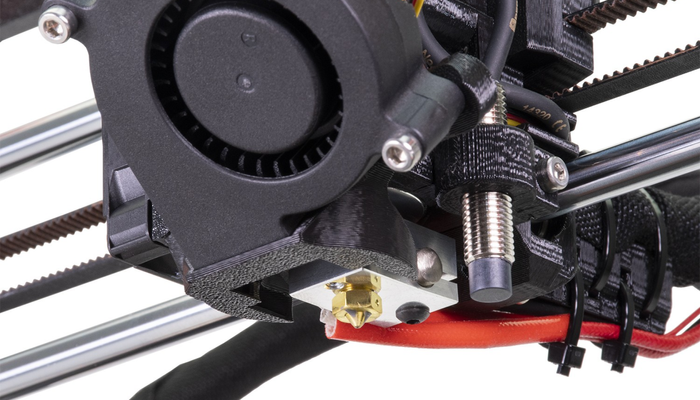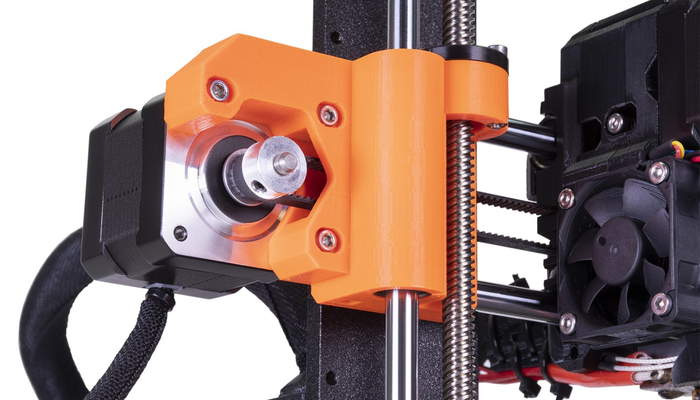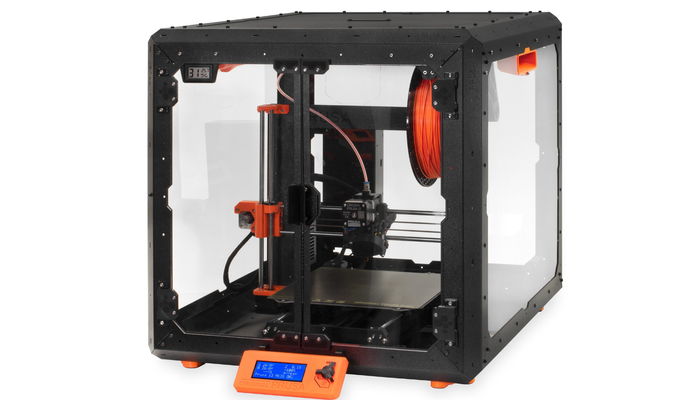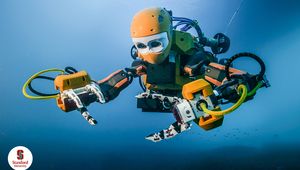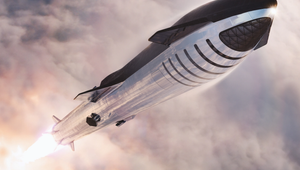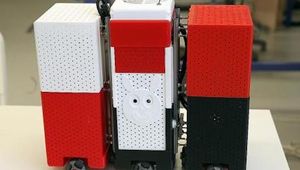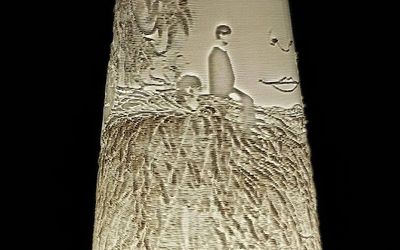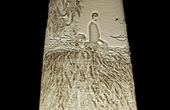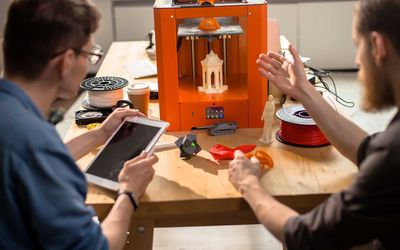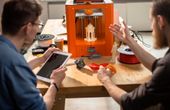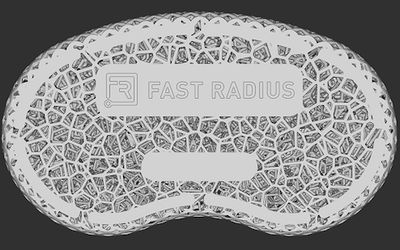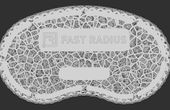Original Prusa i3 MK3S+
A direct drive upgradable 3D printer by Prusa Research featuring SuperPINDA probe with the automatic Mesh Bed Leveling for higher quality prints.
Technical Specifications
| Dimensions | 50 × 55 × 40 cm (19.6 × 21.6 × 15.7 in) |
| Weight | 7 kg |
| Build volume | 250 x 210 x 210 mm (9.84 x 8.3 x 8.3 in) |
| Layer height | 0.05 – 0.35 mm |
| Max travel speed | 200+ mm/s |
| Max hotend/heatbed temp. | 300 °C / 120 °C (572 °F / 248 °F) |
| Mainboard | Einsy RAMBo 8-bit board with Trinamic 2130 drivers co-developed with Ultimachine |
| MMU2S support | Yes |
| Extruder | Direct drive |
| LCD screen | Monochromatic LCD |
| Print surface | magnetic heatbed with removable PEI spring steel sheets |
| Filament diameter | 1.75mm |
| Number of materials (simultaneously) | 1 |
| Nozzle diameter | 0.4mm (default) / other nozzle diameters supported |
| Supported materials | Any thermoplastic including Nylon and Polycarbonate |
| Filament sensor | Yes (IR) |
| Power panic | Hardware-based, single G-code line accuracy |
| Ethernet connection | Via Raspberry Pi |
| Wi-Fi connection | Via Raspberry Pi |
| Advanced sensors | 3 thermistors + SuperPINDA, fan RPM sensors |
| Calibration | Automatic, Mesh Bed Leveling |
| Print medium | SD card |
| Firmware update interface | USB port |
| Power supply | 240W, custom made by Delta with Power Panic HW |
Overview
Problem/Solution
Quality manufacturing needs weeks to months of processes before achieving desired results. 3D printing saves this wasted time at a reduced cost by printing multiple parts without the need for tooling and extra technologies. With 3D printing eliminating the need for molding and tooling, it nullifies potential missteps while allowing for more complex designs. It also projects resolving the long-time issue of sustainability in the manufacturing industry as it promotes reuse and recycling. As 3D printing promotes less wasteful processes at a relatively lower cost, the industry is bound to view 3D printing technology as a key to sustainability.
An improved version of previous models, Prusa i3 MK3S+ features the SuperPINDA sensor for easier assembly and maintenance. The sensor improves first-layer calibration, adds quality Misumi bearings, and contains different useful design tweaks. MK3S+ contains earlier model features, like MK52’s heatbed and removable PEI spring steel sheets, countless sensors, recovery of power loss, and safety aspects during operation. It is available as an assembly kit or assembled and is expandable using the Multi-Material Upgrade 2S—an add-on for simultaneously printing up to 5 materials. MK3S+ 3D printer is upgradable to newer versions in the future. On top of these features, all printer parts are open-source, making codes and blueprints accessible online for a more community-friendly device.
Description
The Original Prusa i3 MK3S+ 3D printer has a volume build of 25×21×21 cm (9.84"×8.3"×8.3") and a layer height of 0.05 - 0.35 mm. Its nozzle has a 0.4mm diameter by default, and the filament has a 1.755mm diameter for a maximum travel speed of 200+ m/s. The MK3S+ extruder is a direct drive bond tech gear of E3D V6 hot-end type that can only print one type of material simultaneously. The printer has a monochromatic LCD screen and advanced sensors, including three thermistors, fans for RPM monitoring, and the all-new SuperPINDA. MK3S+ has automatic mesh bed leveling, and self-test calibration. Its controller is the EINSY RAMBo 8-bit board, utilizing Trinamic 2130 drivers and co-developed with Ultimachine.
SuperPinda Probe
The high-quality sensor SuperPINDA (Super Prusa INDuction Autoleveling) improves the first layer calibration via the fully-automatic Mesh Bed Leveling process. The printer probes the bed in different places before printing, thus creating a virtual height map of the printing area. SuperPINDA’s Mesh Bed Leveling can compensate for microscopic imperfections in the print. It also eliminates inconsistencies in the assembly and stacking of tolerances in various manufacturing parts.
High-Quality Parts
The milled dural frame makes MK3S+ stable, rigid, and easy to assemble, while its Y-axis features an aluminum extrusion assembly. A new set of metal clips composes the MISUMI bearings found on the Y-axis. On the X-axis, the belt tensioning mechanism receives reworking, along with the X-end plastic parts being reinforced. Likewise, there is an alteration in the filament path to support the flexible filament better.
Filament Sensor
The built-in filament IR sensor supports the filament auto-loading using a reliable trigger system, detecting when a filament strand gets inserted in the extruder. The sensor detects all types and filament colors while insusceptible to mechanical wearing. It likewise tells the printer to pause when the filament runs out.
Removable Print Sheets
The magnetic heatbed has removable PEI spring steel sheets, which are not only easy to maintain but are also effective in removing printed objects from the print surface. The print surface may be smooth, textured, and satin, covering a wide range of various materials. The firmware also supports print sheet profiles, which can store Live Z calibration data, enabling fast switching from print sheet to print sheet.
Power Loss Recovery
In case of power loss, the printer has a single G-code line accuracy, allowing the printer to recover and print from where it left off. It detects power interruptions, shutting down the extruder and the heatbed while saving the last identified location. The hardware-based power panic is a part of the custom-made delta power supply unit.
Support for a wide range of Materials
MK3S+ works well among a wide range of material types like thermoplastics, such as PLA, PETG, PC, ASA, CPE, ABS, PP, HIPS, Nylon, Carbon filled, and other filled materials.
Open-source Hardware & Firmware
The machine runs ongoing development on top of regular updates, ensuring that the machine retains useful features like print sheet profiles, Mesh bed leveling, automated calibration, and advanced diagnostics. The firmware updates via the PC’s USB cable.
Original Prusa Enclosure
An accessory that allows a stable printing environment is the Original Prusa Enclosure which houses the Original Prusa i3 MK3S+. The enclosure reduces odors coming from some materials, lowers noise, and allows equipping of other useful add-ons.
The frame and top and bottom panels are metal-made, while the side panels utilize PETG plastic materials. This robust design allows the stacking of several enclosures on top of one another secured using screws. The solid frame also hosts several mounting elements for installing add-ons and cable management.
As the enclosure forms a stable printing environment despite the increasing temperature, it becomes suitable for printing warp-prone materials, like Nylon, PP, PC, and CF. The enclosure also protects the printer from drafts and cold air blasts, reducing dust build-up on moving parts.
For preventing the spread of UFPS (ultra-fine particles), an optional HEPA filtration system offers 99.9% efficiency. The printer also fashions a self-contained fire suppression system, which uses a clean, effective, and safe extinguishing medium on top of its ability to detect higher temperatures.
The enclosure is also customizable for DIY projects as it is upgradable and expandable with paid and free custom-made add-ons.
PrusaSlicer
As a Prusa 3D printer, MK3S+ has an internally developed multiplatform slicer covering a wide variety of filaments, supporting advanced generation, automated object distribution, cutting, and ironing, among others. It has a built-in shape gallery with adaptive lighting and support-cubic infills. It includes an Arachne perimeter generator and HiDPI support that corrects scaling in high-resolution displays. The printer can also perform automatic model repairing and smart background processing, where it reslices steps invalidated by a user action.
